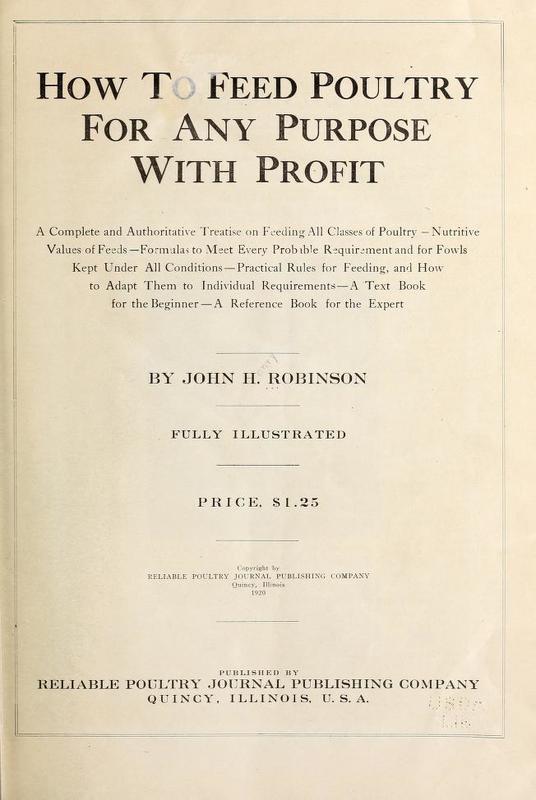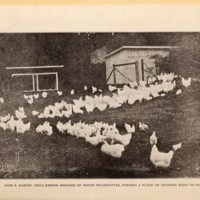How to Feed Poultry for Any Purpose With Profit
Title
How to Feed Poultry for Any Purpose With Profit
A Complete and Authoritative Treatise on Feeding All Classes of Poultry--Nutritive Values of Feeds--Formulas to Meet Every Probable Requirement and For Fowls Kept Under All Conditions--Practical Rules for Feeding, And How to Adapt Them to Individual Requirements--A Text Book for the Beginner--A Reference Book for the Expert
Creator
Date
Publisher
Reliable Poultry Journal Publishing Company. Quincy, IL
Subject
Excerpt
The aim of this book is to give a working knowledge of the whole subject of poultry feeds and feeding. The conditions of modern life, and the economic developments in poultry culture, and in other interests directly or indirectly related to it, make some acquaintance with the scientific side of the subject essential. A generation ago, under what we have been accustomed to call natural conditions of life for them, our several kinds of domestic poultry fed themselves, or were fed, almost entirely upon the waste products of farms, and the wastes from the homes and the barns and gardens in the less thickly populated urban districts. What town poultry keepers could not supply their flocks from such sources was made up by purchase of grain from nearby farms.
In the last thirty years all this has been changed. The increasing demand for poultry and eggs in cities has led to a great increase in the amount of poultry kept in sections where the farmers have no surplus stock feed to sell. At the same time, the increasing use of prepared cereals for human food made great supplies of by-products suitable for stock feeding. Such by-products consist of the coarser, less palatable, and least nutritious parts of the grains from which they are derived; or of the residue when a particular food element is separated from a certain grain to give a human food having peculiarly desirable properties. The profitable use of such by-products in stock feeding is a question of combining them properly with other feeds and of being able to obtain them at least as cheaply as the feed elements they contain could be bought in the cheapest common whole feed article that might be used for the stock to which they are to be fed.
In the last thirty years all this has been changed. The increasing demand for poultry and eggs in cities has led to a great increase in the amount of poultry kept in sections where the farmers have no surplus stock feed to sell. At the same time, the increasing use of prepared cereals for human food made great supplies of by-products suitable for stock feeding. Such by-products consist of the coarser, less palatable, and least nutritious parts of the grains from which they are derived; or of the residue when a particular food element is separated from a certain grain to give a human food having peculiarly desirable properties. The profitable use of such by-products in stock feeding is a question of combining them properly with other feeds and of being able to obtain them at least as cheaply as the feed elements they contain could be bought in the cheapest common whole feed article that might be used for the stock to which they are to be fed.
Type
Collection
File(s)
How to Feed Poultry.jpg
(image/jpeg)
How to Feed Poultry White Wyandottes.jpg
(image/jpeg)
How to Feed Poultry Illustration.jpg
(image/jpeg)
USDA Beltsville Farm.jpg
(image/jpeg)
USDA Beltsville Farm Near View.jpg
(image/jpeg)
 An official website of the United States government.
An official website of the United States government.






